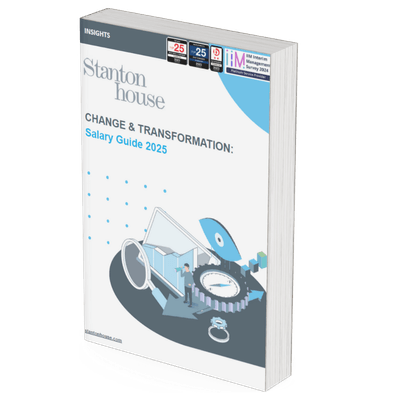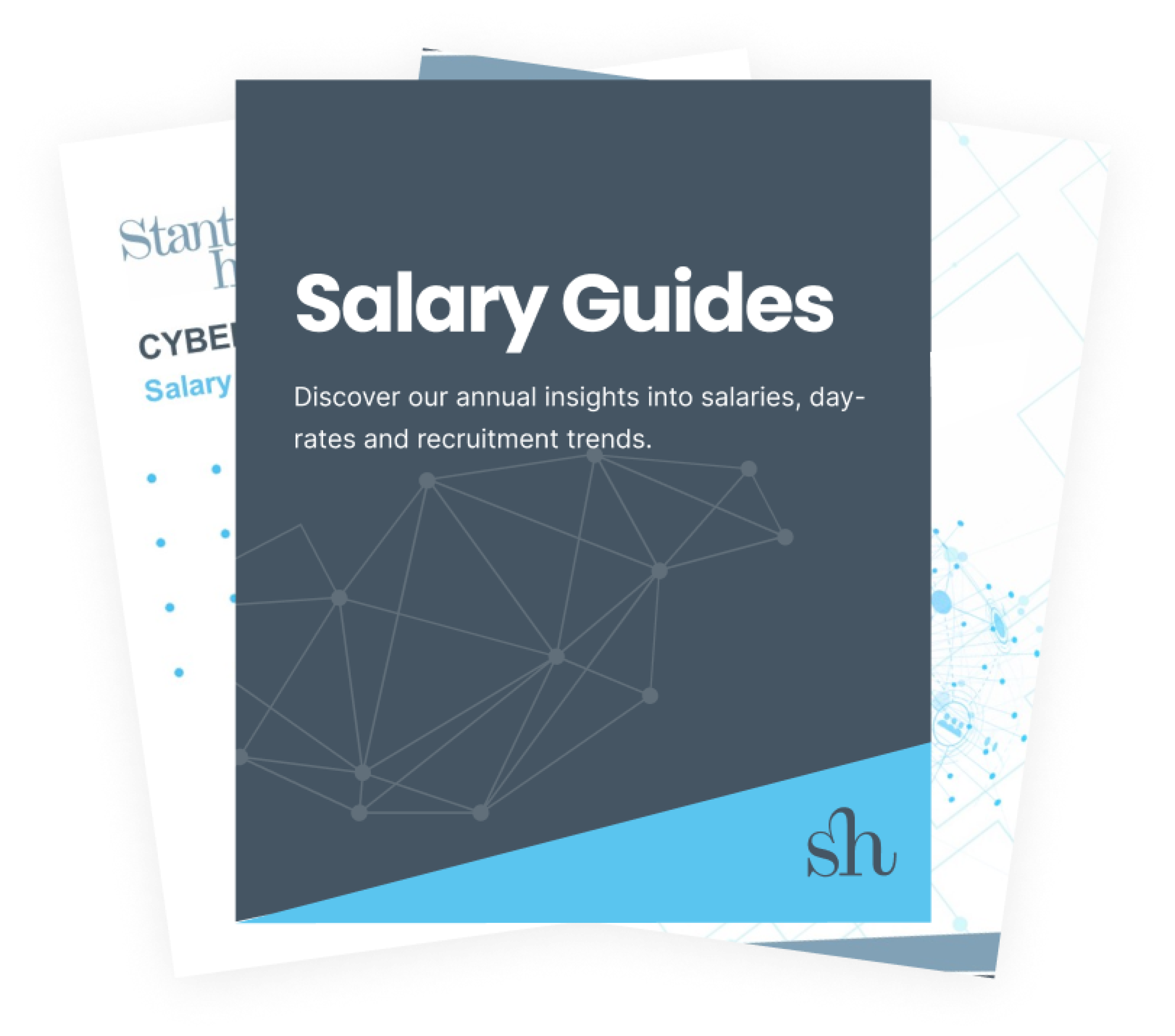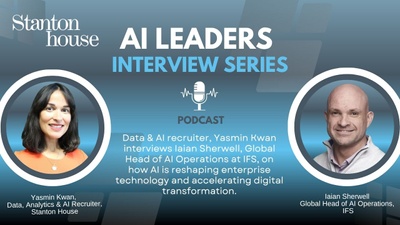
The AI Revolution & The Strategic Dilemma for Change & Transformation Leaders
The pace at which AI has disrupted industries has been extraordinary. What felt like a future-gazing conversation just a couple of years ago is now dominating agendas – and in many cases, leaving leaders scrambling to figure out what it all really means for their business.
In my conversations with Transformation and Programme Leaders, I’m hearing the same challenge: being tasked with “using AI to make things quicker, faster, cheaper” without a clearly defined strategy. While efficiency is part of AI’s promise, its real potential is much bigger - to spark innovation, create competitive advantage through more efficient and streamlined processes, and fundamentally reimagining how organisations operate.
From where I sit, placing senior Change & Transformation talent, I see both the opportunities and the pitfalls of AI-led change. Here’s what I believe leaders need to keep front of mind when embedding AI into transformation initiatives:
- Start With the Business Objective – AI should never be adopted for its own sake. It’s a powerful enabler, but the starting point should always be the business goal. The most successful leaders I work with align AI initiatives with wider transformation strategies so they’re solving the right problems, not just chasing automation for speed’s sake.
- Balance Tech With People – AI adoption isn’t just a technical shift, it’s a cultural one. People need to trust and understand the technology before it can deliver value. That means putting equal effort into capability-building, change resilience, and behavioural adoption as you do into the tech stack.
- One Size Doesn’t Fit All – AI’s role varies massively by sector, function, and maturity level. Generic, blanket automation often fails – tailored AI strategies succeed.
- Governance Matters – With AI, bias, compliance, and data integrity are real risks. Leaders must ensure ethical, transparent deployment by building governance frameworks from day one.
- Don’t Fall Into the ‘Tech First, Strategy Later’ Trap – Many organisations rush into AI without a clear roadmap, only to discover later that their data, integration capabilities, or governance aren’t ready. The best transformation leaders I know start with an AI-readiness assessment before scaling any solution.
When AI Opportunity Becomes Overload
But while some leaders move too quickly, others face the opposite challenge: AI opportunity overload.
I recently heard this refrain:
“Every time we’re close to committing to a tech platform, three more AI tools hit the market. It’s paralysing our progress – we keep asking, ‘what’s next?’ instead of moving forward.”
This isn’t just anecdotal. The pace and volume of AI-powered tools entering the market can create a constant fear of making the “wrong” investment. Indeed, according to an EY survey, 59% of employees believe senior leaders are slow to adopt emerging technologies, and 48% feel their leadership doesn’t fully understand the value these tools bring.
When the next wave of innovation arrives before the current choice is embedded, decision fatigue sets in – stalling transformation instead of accelerating it. This is where experienced transformation leaders become invaluable: cutting through the noise, building consensus, and ensuring momentum is maintained even in a fast-moving tech landscape.
Whether the barrier is over-enthusiasm without direction or decision paralysis from too much choice, leaders need a new set of capabilities to navigate AI adoption with confidence.
The Skills Transformation Leaders Now Need
AI is reshaping the skillset for transformation professionals. Beyond traditional project and change management, leaders now need to be:
- AI & Data Literate – Understanding how AI-generated insights shape strategy.
- Agile & AI-Integrated – Leveraging AI to accelerate agile delivery without losing adaptability.
- Human-Centric – Designing adoption strategies that balance automation with employee engagement and cultural integration.
Leaders who position AI as a strategic enabler, not just a cost-cutter, will be the ones driving sustainable change.
The Tools Changing the Game
We’re already seeing AI redefine the transformation toolkit:
- AI-Powered ERP Systems (SAP S/4HANA, Oracle Cloud, Workday, Anaplan) – Predictive insights driving operational efficiency.
- Automation Platforms (UiPath, Automation Anywhere, Celonis) – Removing manual bottlenecks in execution.
- AI-Enhanced CRM & Finance Tools (Salesforce AI - Agentforce, Anaplan) – Enabling data-led decision-making in transformation programmes.
- Sentiment & Behavioural AI (Qualtrics, IBM Watson) – Tracking real-time engagement during major change initiatives.
Firms that integrate these capabilities into their change strategies are already seeing a competitive edge in speed, accuracy, and adoption.
The Evolving Role of PMO & Change Professionals
Far from making roles redundant, AI is elevating the strategic importance of PMO and Change teams:
- PMOs are shifting from trackers to strategists, using AI insights to guide transformation.
- Change managers are focusing on adoption and behavioural analytics, personalising communication strategies using sentiment data.
- Transformation leaders are becoming AI facilitators, ensuring tools are embedded into methodologies in ways that deliver real business outcomes.
No algorithm can replace human judgement when it comes to stakeholder buy-in or navigating corporate politics – and that’s why experienced change leaders will remain indispensable.
Final Thought
AI is changing the game in transformation, but the winners will be those who implement it with purpose, strategy, and people at the heart.
If you’re a transformation professional or hiring manager navigating this space, I’d love to share market insight, discuss your challenges, and connect you to the right talent or opportunities. Contact me, Keiysha Greer-Simpson, for career or hiring advice in the Change & Transformation space.
Download the 2025 Change & Transformation Salary Guide
If you work in, lead, or hire for Change & Transformation, this guide is your go-to resource for understanding today’s market and planning for the year ahead.
Inside, you’ll discover:
- Salary & Day Rate Benchmarks – Detailed UK market data for permanent, fixed-term, and interim roles across Change & Transformation, including PMO, Change Management, Programme & Project Delivery, and Transformation Leadership.
- Hiring & Talent Trends – Insight into how market conditions, AI adoption, and transformation priorities are shaping demand for different skills.
- The AI Impact – How emerging technologies are changing the transformation function and creating new opportunities for leaders who can integrate tech and people strategies.
- Hot Skills & In-Demand Roles – Where employers are investing right now, and what skills are becoming essential to stand out in a competitive market.
- Future Outlook – Stanton House’s view on how political stability, regulatory change, and digital transformation programmes will affect the market over the next 12 months.
Whether you’re a transformation leader looking to benchmark your salary, an interim exploring new opportunities, or a hiring manager seeking to attract top talent, this guide will give you the data and context you need to make confident decisions.
Download your guide below:




















